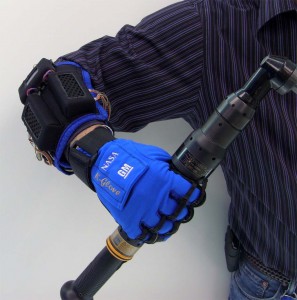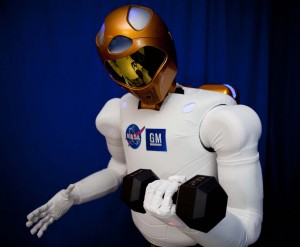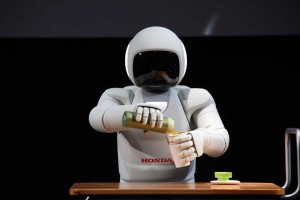
Robo-Glove could significantly reduce repetitive stress disorders on an assembly line - while making it easier to work in space.
It may be rocket science, but General Motors says a new robotic glove it’s developing with NASA has some seriously practical applications down on Earth.
Formally known as the Human Grasp Assist, the system is a spin-off of the Robonaut 2 project, a human-like robot GM helped develop that’s now operating on the International Space Station, or ISS. Known internally as Robo-Glove, the prototype is intended to make it easier to hold something in your grip longer and more comfortably.
The system could be used by space-walking astronauts as well as workers on the assembly line, says Dana Komin, GM’s manufacturing engineering director, Global Automation Strategy and Execution.
“When fully developed, the Robo-Glove has the potential to reduce the amount of force that an auto worker would need to exert when operating a tool for an extended time or with repetitive motions,” explains Komin. “In so doing, it is expected to reduce the risk of repetitive stress injury.”
The system was inspired by the “hand” design of R2, as the Robonaut has come to be known. It uses pressure sensors to give the glove an artificial sense of touch. When it “feels” the wearer grasping something like a tool synthetic tendons retract to help them hold on.
In space, that can be a significant advantage. It might take 15 to 20 pounds of force to hold onto a wrench, something that can rapidly tire out a spacewalker. But the robotic glove can reduce the load to somewhere between five and 10 pounds says Trish Petete, division chief, Crew and Thermal Systems Division, NASA Johnson Space Center.
“The prototype glove offers my space suit team a promising opportunity to explore new ideas, and challenges our traditional thinking of what extravehicular activity hand dexterity could be,” Petete suggests.
Now in its second generation, GM says the Robo-Glove uses the same “skin” as R2. It currently weighs about two pounds and draws power from an off-the-shelf power tool lithium-ion battery that can be worn on a user’s belt. A third-generation glove is now under development and should reduce both the size and weight of the system.
GM and NASA have so far filed four individual patents related to the Robo-Glove, while there are 46 on file for Robonaut 2.
While R2 might look like the upper half of an astronaut suited up for a space walk, GM developers stress that he not only looks human but is designed to work like one, with arms and hands that can perform the same function as living, breathing space station dwellers.
The GM/NASA robot was launched on one of the last space shuttle missions and now resides on the state station.
GM isn’t the only automaker pressing into anthropomorphic robot development. Honda is, in fact, better known for its long-running robot program, the maker frequently trotting out ASIMO, its own, ground-based cousin of Star War’s R2D2. The newest version of ASIMO was introduced last autumn, serving coffee to the maker’s CEO Takanobu Ito during Honda’s Tokyo Motor Show news conference.


